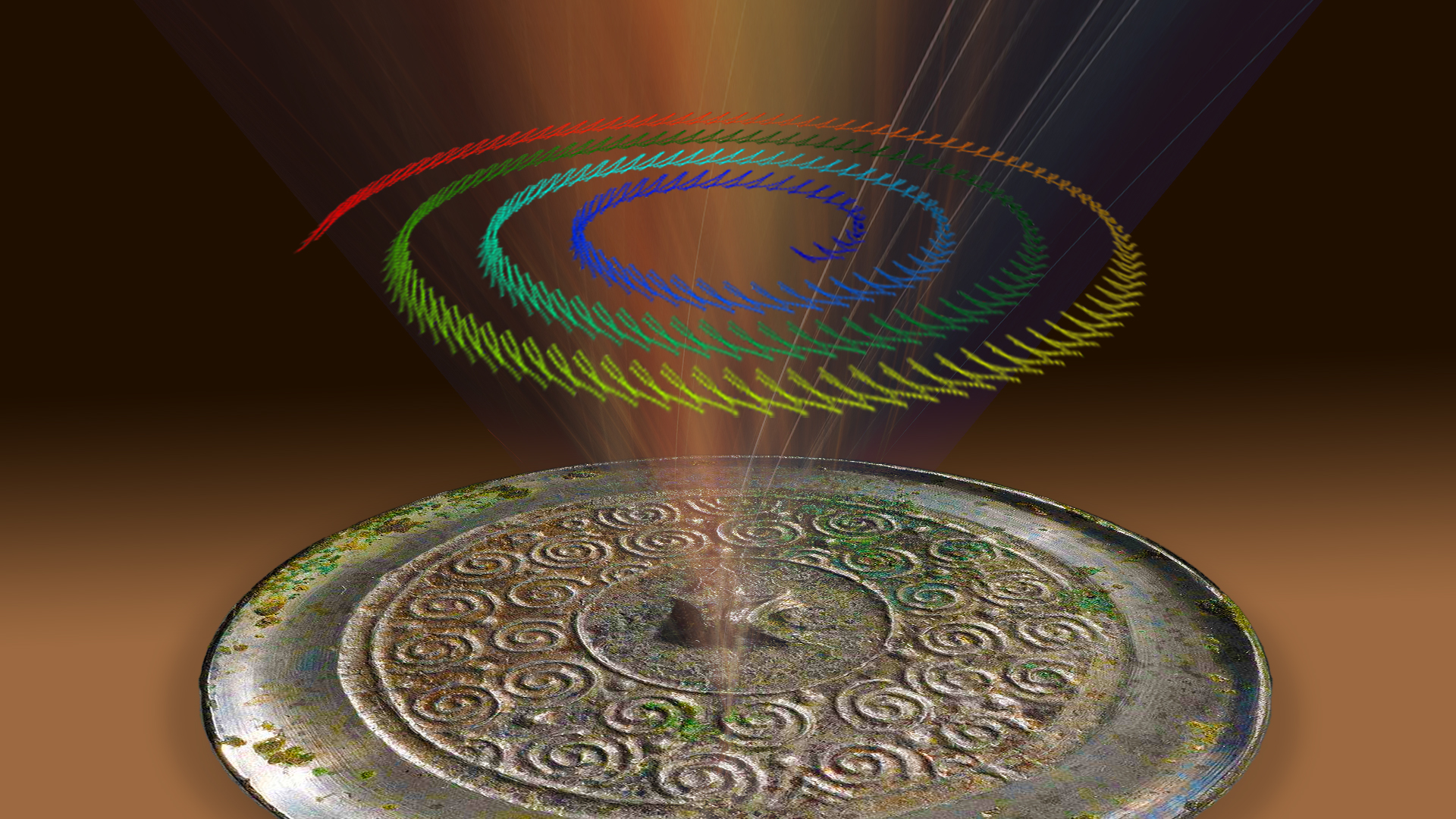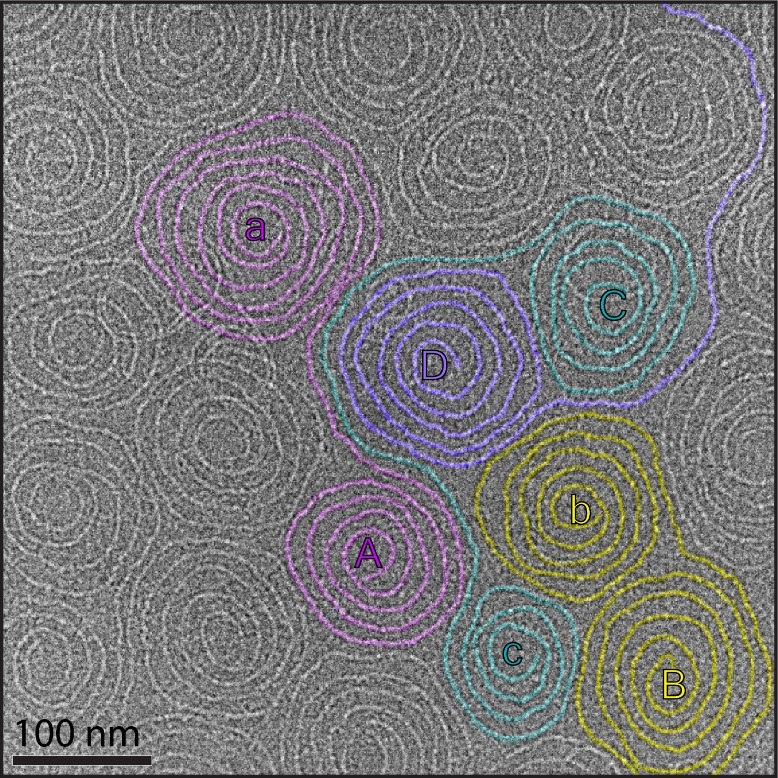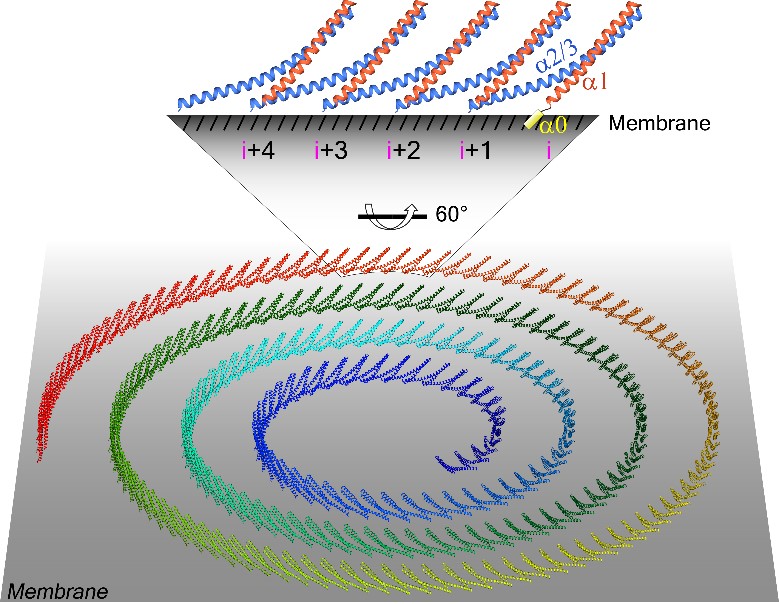Understanding the structure and function of the Endosomal Sorting Complexes Required for Transport-III (ESCRT-III) in eukaryotic cells is of paramount importance due to its involvement in crucial membrane remodeling processes essential for cell division, nuclear envelope remodeling, plasma membrane repair, and neuronal pruning. Dysfunctions in ESCRT machinery have been implicated in various diseases, including cancer and neurodegenerative disorders, underscoring the need for comprehensive investigations into its mechanisms of action.
However, the peculiar characteristics of ESCRT-III flat spirals, such as their small diameter, high curvature, and single orientation on the membrane, pose significant challenges to three-dimensional structural analysis, hindering our understanding of ESCRT-III-mediated membrane remodeling.

A research team led by Associate Professor Qingtao Shen from the School of Life Sciences at the Southern University of Science and Technology (SUSTech) has tackled the challenge of the flexible assembly of biomacromolecules. They developed a reconstruction method called Euler angle-assigned reconstruction (EAAR) based on single-particle cryo-electron microscopy (cryo-EM) technology. This method enabled the first structure of flat spirals formed by ESCRT-III in eukaryotic cells.
Their research, titled “Three-dimensional architecture of ESCRT-III flat spirals on the membrane”, has been published in the Proceedings of the National Academy of Sciences (PNAS), a flagship journal of the National Academy of Sciences of the United States.
The ESCRT machinery consists of five subcomplexes: ALIX, ESCRT-I, ESCRT-II, ESCRT-III, and Vps4. Among these, ESCRT-III is responsible for the most critical membrane deformation and membrane fission processes during membrane remodeling.
In 2014, Qingtao Shen’s research team was the first to observe the flat spirals of ESCRT-III using cryo-EM (Journal of Cell Biology, 2014, cover story) (Figure 1). However, the flat spirals of ESCRT-III exhibit peculiar characteristics such as tiny diameter, high curvature, and single orientation on the membrane, posing significant challenges to their three-dimensional structural analysis and severely limiting the understanding of the membrane remodeling mechanism mediated by ESCRT-III.

Figure 1. Flat spirals formed by ESCRT-III
Based on the central section theorem, the key step in three-dimensional reconstruction lies in precisely computing the Euler angles (ϕ, θ, ψ) for each particle. Euler angles are usually obtained through particle-to-template matching, which may fall into local minima pitfalls, leading to reconstruction errors.
In this study, the researchers collected tilted sample data and developed graphical software to depict the flat spirals of ESCRT-III. By fully utilizing geometric constraints between adjacent particles and employing mathematical calculations to determine initial particle Euler angles, they developed the Euler angle-assigned reconstruction (EAAR) method. This method successfully resolved the three-dimensional structures of different conformations of ESCRT-III, outlining for the first time the assembly form and mechanism of ESCRT-III on the membrane (Figure 2).

Figure 2. The pseudoatomic model of ESCRT-III flat spirals
This work provides an initial conformational insight into the transition of ESCRT-III oligomers from flat spirals to dome-like structures, opening up new avenues for studying ESCRT-III-mediated membrane remodeling. The reconstruction method, EAAR, proposed in this work effectively circumvents the issue of local minima pitfalls in single-particle cryo-EM reconstruction.
It also offers a new strategy for resolving the structures of large macromolecular complexes on membrane systems such as liposomes and organelles, which are geometrically constrained and exhibit severe preferred orientations.
Mingdong Liu, a Principal Excellence postdoctoral fellow of the School of Life Sciences at SUSTech, is the first author of this paper. Associate Professor Qingtao Shen is the corresponding author, and SUSTech is the first affiliated unit. Professor Yuzhong Zhang’s team from Shandong University and Professor Yong Wang’s team from Zhejiang University also contributed to this research.
This study was supported by the National Key Research and Development Program and the National Natural Science Foundation of China.
Paper link: https://www.pnas.org/doi/10.1073/pnas.2319115121
To read all stories about SUSTech science, subscribe to the monthly SUSTech Newsletter.
Proofread ByAdrian Cremin, Yingying XIA
Photo BySchool of Life Sciences